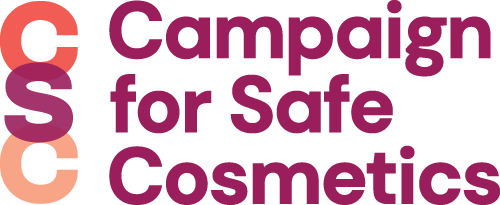[1] USEPA (2014). Perfluorooctanoic Acid (PFOA) and Fluorinated Telomers. Available at: https://www.epa.gov/sites/default/files/2016-05/documents/pfoa_health_advisory_final-plain.pdf. Accessed April 21, 2022.
[2] Lau, C., Anitole, K., Hodes, C., Lai, D., Pfahles-Hutchens, A., & Seed, J. (2007). Perfluoroalkyl acids: a review of monitoring and toxicological findings.Toxicological sciences, 99(2), 366-394.
[3] Van der Putte, I., Murín, M., Van Velthoven, M., & Affourtit, F. (2010). Analysis of the risks arising from the industrial use of perfuorooctanoic acid (PFOA) and ammonium perfluorooctanoate (APFO) and from their use in consumer articles.Delft (NL): RPS Advies.
[4] PFOA Stewardship Program. Regulations.gov. Available online: https://www.regulations.gov/docket/EPA-HQ-OPPT-2006-0621. Accessed April 21, 2022.
[5] Trudel, D., Horowitz, L., Wormuth, M., Scheringer, M., Cousins, I. T., & Hungerbühler, K. (2008). Estimating consumer exposure to PFOS and PFOA.Risk Analysis, 28(2), 251-269.
[6] Jensen, A. A., & Leffers, H. (2008). Emerging endocrine disrupters: perfluoroalkylated substances. International Journal of Andrology, 31(2), 161–169. doi:10.1111/j.1365-2605.2008.00870.x.
[7] A.M. Calafat, L.Y. Wong, Z. Kuklenyik, J.A. Reidy, L.L. Needham (2007). Polyfluoroalkyl chemicals in the US population: data from the National Health and Nutrition Examination Survey (NHANES) 2003–2004 and comparisons with NHANES 1999–2000. Environ. Health Perspect., 115, 1596–1602.
[8] K. Kannan, S. Corsolini, J. Falandysz, G. Fillmann, K.S. Kumar, B.G. Loganathan, M.A. Mohd, J. Olivero, N. Van Wouwe, J.H. Yang, K.M. Aldous. Perfluorooctanesulfonate and related fluorochemicals in human blood from several countries. Environ. Sci. Technol., 38, 4489–4495.
[9] Apelberg, B. J., Goldman, L. R., Calafat, A. M., Herbstman, J. B., Kuklenyik, Z., Heidler, J., … Witter, F. R. (2007). Determinants of fetal exposure to polyfluoroalkyl compounds in Baltimore, Maryland. Environ Sci Tech, 41(11), 3891–3897.
[10] Apelberg, B. J., Witter, F. R., Herbstman, J. B., Calafat, A. M., Halden, R. U., Needham, L. L., & Goldman, L. R. (2007). Cord serum concentrations of perfluorooctane sulfonate (PFOS) and perfluorooctanoate (PFOA) in relation to weight and size at birth. Environ Health Persp, 115(11), 1670–1676.
[11] Yang, C., Tan, Y.S., Harkema, J.R., Haslam, S.Z. Differential effects of peripubertal exposure to perfluorooctanoic acid on mammary gland development in C57Bl/6 and Balb/c mouse strains (2009) Reproductive Toxicology, 27 (3-4), pp. 299-306.
[12] Zhao, Y., Tan, Y. S., Haslam, S. Z., & Yang, C. (2010). Perfluorooctanoic acid effects on steroid hormone and growth factor levels mediate stimulation of peripubertal mammary gland development in C57BL/6 mice. Toxicological sciences, kfq030.
[13] Van der Putte, I., Murín, M., Van Velthoven, M., & Affourtit, F. (2010). Analysis of the risks arising from the industrial use of perfuorooctanoic acid (PFOA) and ammonium perfluorooctanoate (APFO) and from their use in consumer articles.Delft (NL): RPS Advies.
[14] White, S.S., Kato, K., Jia, L.T., Basden, B.J., Calafat, A.M., Hines, E.P., Stanko, J.P., Wolf, C.J., Abbott, B.D., Fenton, S.E. Effects of perfluorooctanoic acid on mouse mammary gland development and differentiation resulting from cross-foster and restricted gestational exposures (2009) Reproductive Toxicology, . Article in Press.
[15] Bonefeld-Jorgensen, E. C., Long, M., Bossi, R., Ayotte, P., Asmund, G., Krüger, T., … Dewailly, E. (2011). Perfluorinated compounds are related to breast cancer risk in Greenlandic Inuit: a case control study. Environmental Health: A Global Access Science Source, 10, 88. doi:10.1186/1476-069X-10-88.
[16] Guizhen Du, Hongyu Huang, Jialei Hu, Yufeng Qin, Di Wu, Ling Song, Yankai Xia, Xinru Wang. Endocrine-related effects of perfluorooctanoic acid (PFOA) in zebrafish, H295R steroidogenesis and receptor reporter gene assays. Chemosphere, Volume 91, Issue 8, May 2013, Pages 1099–1106.
[17] Guizhen Du, Hongyu Huang, Jialei Hu, Yufeng Qin, Di Wu, Ling Song, Yankai Xia, Xinru Wang. Endocrine-related effects of perfluorooctanoic acid (PFOA) in zebrafish, H295R steroidogenesis and receptor reporter gene assays. Chemosphere, Volume 91, Issue 8, May 2013, Pages 1099–1106.
[18] Manhai Long, Mandana Ghisari, Eva Cecilie Bonefeld-Jørgensen. Effects of perfluoroalkyl acids on the function of the thyroid hormone and the aryl hydrocarbon receptor Environmental Science and Pollution Research. November 2013, Volume 20, Issue 11, pp 8045-8056.
[19] Guizhen Du, Hongyu Huang, Jialei Hu, Yufeng Qin, Di Wu, Ling Song, Yankai Xia, Xinru Wang. Endocrine-related effects of perfluorooctanoic acid (PFOA) in zebrafish, H295R steroidogenesis and receptor reporter gene assays. Chemosphere, Volume 91, Issue 8, May 2013, Pages 1099–1106.
[20] Hongxia Zhang, Yin Lu, Bin Luo, Shengmin Yan, Xuejiang Guo, and Jiayin Dai. Proteomic Analysis of Mouse Testis Reveals Perfluorooctanoic Acid-Induced Reproductive Dysfunction via Direct Disturbance of Testicular Steroidogenic Machinery. J. Proteome Res., 2014, 13 (7), pp 3370–3385. DOI: 10.1021/pr500228d.
[21] Henry ND, Fair PA. J Appl Toxicol. 2013 Apr;33(4):265-72. doi: 10.1002/jat.1736. Epub 2011 Sep 21. Comparison of in vitro cytotoxicity, estrogenicity and anti-estrogenicity of triclosan, perfluorooctane sulfonate and perfluorooctanoic acid.
[22] Melzer, D., Rice, N., Depledge, M. H., Henley, W. E., & Galloway, T. S. (2010). Association between serum perfluorooctanoic acid (PFOA) and thyroid disease in the US National Health and Nutrition Examination Survey. Environmental health perspectives, 118(5), 686.
[23] Lopez-Espinosa, M.-J., Fletcher, T., Armstrong, B., Genser, B., Dhatariya, K., Mondal, D., … Leonardi, G. (2011). Association of Perfluorooctanoic Acid (PFOA) and Perfluorooctane Sulfonate (PFOS) with age of puberty among children living near a chemical plant. Environmental Science & Technology, 45(19), 8160–8166. doi:10.1021/es1038694.
[24] Pinney, S., Windham, G., Biro, F. M., Kushi, L., Yaghjyan, L., Calafat, A. M., … Bornschein, R. (2009). Perfluorooctanoic acid (PFOA) and pubertal maturation in young girls. Epidemiology, 20(6), S80.
[25] White, S. S., Fenton, S. E., & Hines, E. P. (2011). Endocrine disrupting properties of perfluorooctanoic acid. The Journal of steroid biochemistry and molecular biology, 127(1), 16-26.
[26] Van der Putte, I., Murín, M., Van Velthoven, M., & Affourtit, F. (2010). Analysis of the risks arising from the industrial use of perfuorooctanoic acid (PFOA) and ammonium perfluorooctanoate (APFO) and from their use in consumer articles.Delft (NL): RPS Advies.
[27] Lyndsey A. Darrow, 1 Cheryl R. Stein,2 and Kyle Steenland. Serum Perfluorooctanoic Acid and Perfluorooctane Sulfonate Concentrations in Relation to Birth Outcomes in the Mid-Ohio Valley, 2005–2010. Environ Health Perspect. Oct 1, 2013; 121(10): 1207–1213.
[28] Apelberg, B. J., Witter, F. R., Herbstman, J. B., Calafat, A. M., Halden, R. U., Needham, L. L., & Goldman, L. R. (2007). Cord serum concentrations of perfluorooctane sulfonate (PFOS) and perfluorooctanoate (PFOA) in relation to weight and size at birth. Environ Health Persp, 115(11), 1670–1676.
[29] Kusheng Wua, b, Xijin Xua, Lin Penga, c, Junxiao Liua, Yongyong Guoa, Xia Huoa. Association between maternal exposure to perfluorooctanoic acid (PFOA) from electronic waste recycling and neonatal health outcomes. Environment International, Volume 48, 1 November 2012, Pages 1–8.
[30] Jamie C. DeWitt, Alexander Shnyra, Mostafa Z. Badr, Scott E. Loveless, Denise Hoban, Steven R. Frame, Robyn Cunard, Stacey E. Anderson, B. Jean Meade, Margie M. Peden-Adams, Robert W. Luebke, Michael I. Luster. Immunotoxicity of Perfluorooctanoic Acid and Perfluorooctane Sulfonate and the Role of Peroxisome Proliferator-Activated Receptor Alpha. Critical Reviews in Toxicology, January 2009, Vol. 39, No. 1 : Pages 76-94.
[31] Barry, V, Darrow LA, Klein M, Winquis A, Steenland K. Early life perfluorooctanoic acid (PFOA) exposure and overweight and obesity risk in adulthood in a community with elevated exposure Environmental Research Volume 132, July 2014, Pages 62–69.
[32] Conny Karnes,Andrea Winquist, Kyle Steenland. Incidence of type II diabetes in a cohort with substantial exposure to perfluorooctanoic acid. Environmental Research, Volume 128, January 2014, Pages 78–83.


































